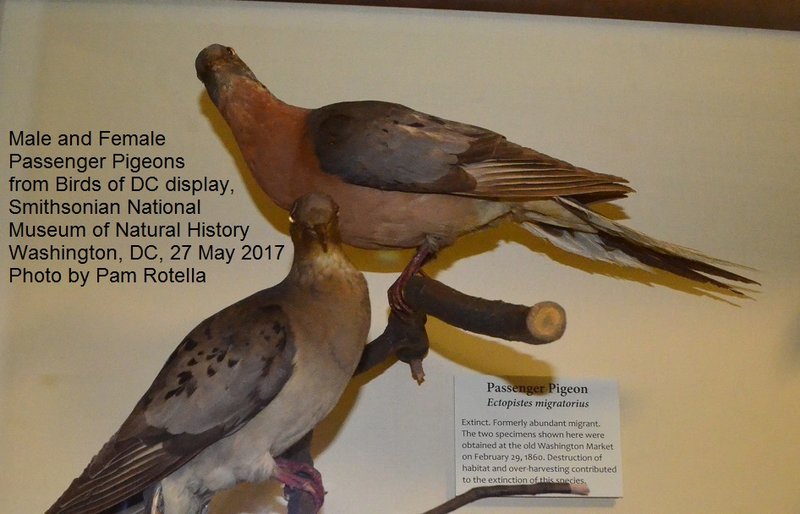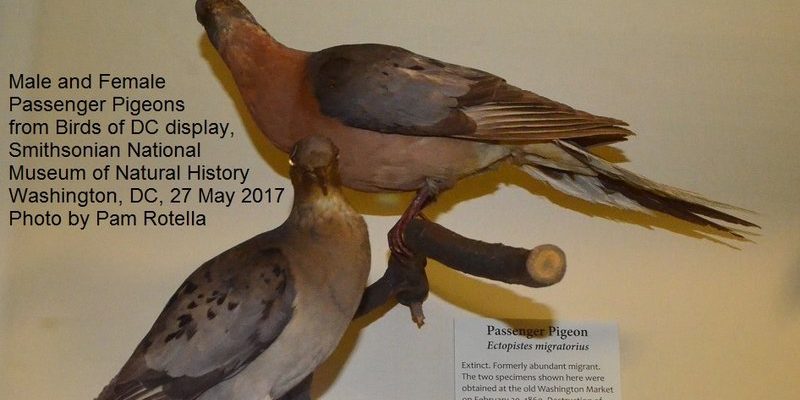
As we dig deeper, we’ll also look at some bird species that share similarities with the passenger pigeon. This isn’t just a history lesson; understanding these differences can help us appreciate the diversity of the bird world. So, grab your favorite drink, settle in, and let’s dive into the world of pigeons and their relatives.
The Passenger Pigeon: An Overview
Before we jump into comparisons, let’s take a moment to look at the passenger pigeon itself. These birds were remarkable in many ways. First off, they were social creatures, often forming massive flocks. These flocks were so large that they could stretch for miles, making even the largest city gatherings look small in comparison. Their ability to communicate and navigate in these large groups is a big part of what made them successful in the wild.
In terms of appearance, the passenger pigeon had a sleek, elegant body, typically a mix of gray and brown feathers with a hint of iridescence. They were medium-sized birds, weighing around a pound or so. You might’ve noticed their slightly pointed tails and long wings—perfect for high-speed flying. Unfortunately, their beauty wasn’t enough to save them from extinction, with the last known passenger pigeon dying in 1914.
But what about their behaviors and habits? Passenger pigeons were known for their strong migratory instincts, traveling long distances to find food. They primarily fed on seeds, fruits, and nuts, which were abundant in their natural habitats. This adaptability was essential for thriving in diverse environments throughout North America.
Similar Bird Species: Mourning Dove
One bird that often gets compared to the passenger pigeon is the mourning dove. While smaller and more delicate, these doves share a few common traits with their extinct relatives. For starters, the mourning dove is also quite sociable, often seen in groups, especially when foraging. Their soft cooing sounds are familiar to many, and you might have seen them soaring gracefully on warm afternoons.
In terms of appearance, mourning doves have a light brown-gray plumage, which can be somewhat reminiscent of the passenger pigeon. However, they are noticeably smaller, averaging around 4–5 ounces in weight. Their long tails are also a distinguishing feature, giving them a unique silhouette in the sky.
You might be wondering how these two species behave differently. While the mourning dove is more adaptable to urban environments, passenger pigeons were known for their migratory patterns. Mourning doves can often be spotted nesting in gardens and parks, showing their ability to thrive alongside humans.
The Band-tailed Pigeon: A Close Relative
Another bird to consider is the band-tailed pigeon. This species has a lot in common with the passenger pigeon, especially in terms of size and appearance. Band-tailed pigeons are larger than mourning doves but still lighter than passenger pigeons. They typically sport a grayish-brown color with a distinctive white band at the tail, which is a key feature for birdwatchers trying to identify them in the wild.
In terms of behavior, band-tailed pigeons primarily live in wooded areas and are known for their social feeding habits. They often forage in flocks, similar to how passenger pigeons did. However, what’s interesting is that band-tailed pigeons are not migratory; they tend to stay in one area as long as food is available. This shift in behavior shows how different species adapt to their environments in diverse ways.
While the passenger pigeon relied on vast expanses of forests and fields, band-tailed pigeons are more focused on specific habitats. This difference highlights the importance of habitat preservation for bird species still with us today.
Wood Pigeons: Another Comparison
If we look across the pond, we find the wood pigeon, a species that offers some interesting contrasts to the passenger pigeon. Wood pigeons are common in Europe and are larger than the mourning dove but share some similarities with passenger pigeons in terms of their stout body. They possess a more robust frame and often have a striking iridescent neck, making them quite beautiful to observe.
Unlike the passenger pigeon, which had a specific migratory pattern, wood pigeons are often sedentary. They adapt well to human environments, frequently feeding on agricultural crops. The fact that they can thrive in cities and rural areas alike shows a flexibility that the passenger pigeon couldn’t maintain in the face of hunting and habitat destruction.
Wood pigeons also exhibit different social behaviors. While they do sometimes gather in flocks, they are more likely to be seen in pairs or small groups, especially during mating season, making their social structure quite distinct from that of the passenger pigeons.
Environmental Impact on Bird Populations
One of the major factors that led to the passenger pigeon’s extinction was rapid habitat loss and hunting pressures from humans. As North America expanded, forests were cut down, and the flocks were hunted extensively for food. The lesson here is clear: an environment that sustains bird populations is crucial for their survival.
Contrary to the passenger pigeon, species like the mourning dove and band-tailed pigeon have thrived because they’ve adapted to changing landscapes. This adaptability highlights how resilient some birds can be when faced with environmental changes. How do we ensure that species like these continue to flourish? Protecting their habitats and promoting conservation efforts are key.
Moreover, breeding programs for endangered species foster their populations. By learning from past mistakes, we can prevent history from repeating itself, offering hope for vulnerable bird species.
The Role of Conservation in Protecting Similar Species
Considering the fate of the passenger pigeon, conservation efforts play a crucial role in safeguarding other bird species. Organizations worldwide are working to implement strategies to protect habitats, especially for those birds threatened by urban development or climate change.
To ensure the survival of species similar to the passenger pigeon, we can focus on creating reserves that support diverse ecosystems. These areas not only provide shelter and food for birds but also promote biodiversity, which is essential for a balanced environment. Engaging in conservation projects, community programs, or even backyard habitats can make a difference.
You might be amazed at how small actions can have a big impact. Whether it’s planting native plants that attract birds or supporting local wildlife organizations, every little bit helps in driving efforts to conserve our planet’s precious bird species.
Final Thoughts: A Reflection on Avian Diversity
Understanding the differences between the passenger pigeon and similar bird species allows us to appreciate the rich tapestry of avian life around us. From the graceful mourning dove to the resilient band-tailed pigeon, these birds showcase the incredible diversity within the pigeon family.
It’s important to remember that every species has its role in the ecosystem. As we enjoy watching these beautiful birds, we’re reminded of the need to protect them. By learning from the past, we can create a future where diverse bird populations thrive together, hopefully ensuring that no other birds meet the same fate as the passenger pigeon.
So, the next time you see a pigeon or dove fluttering by, take a moment to appreciate their beauty and the unique journey that has brought them to our skies today.

